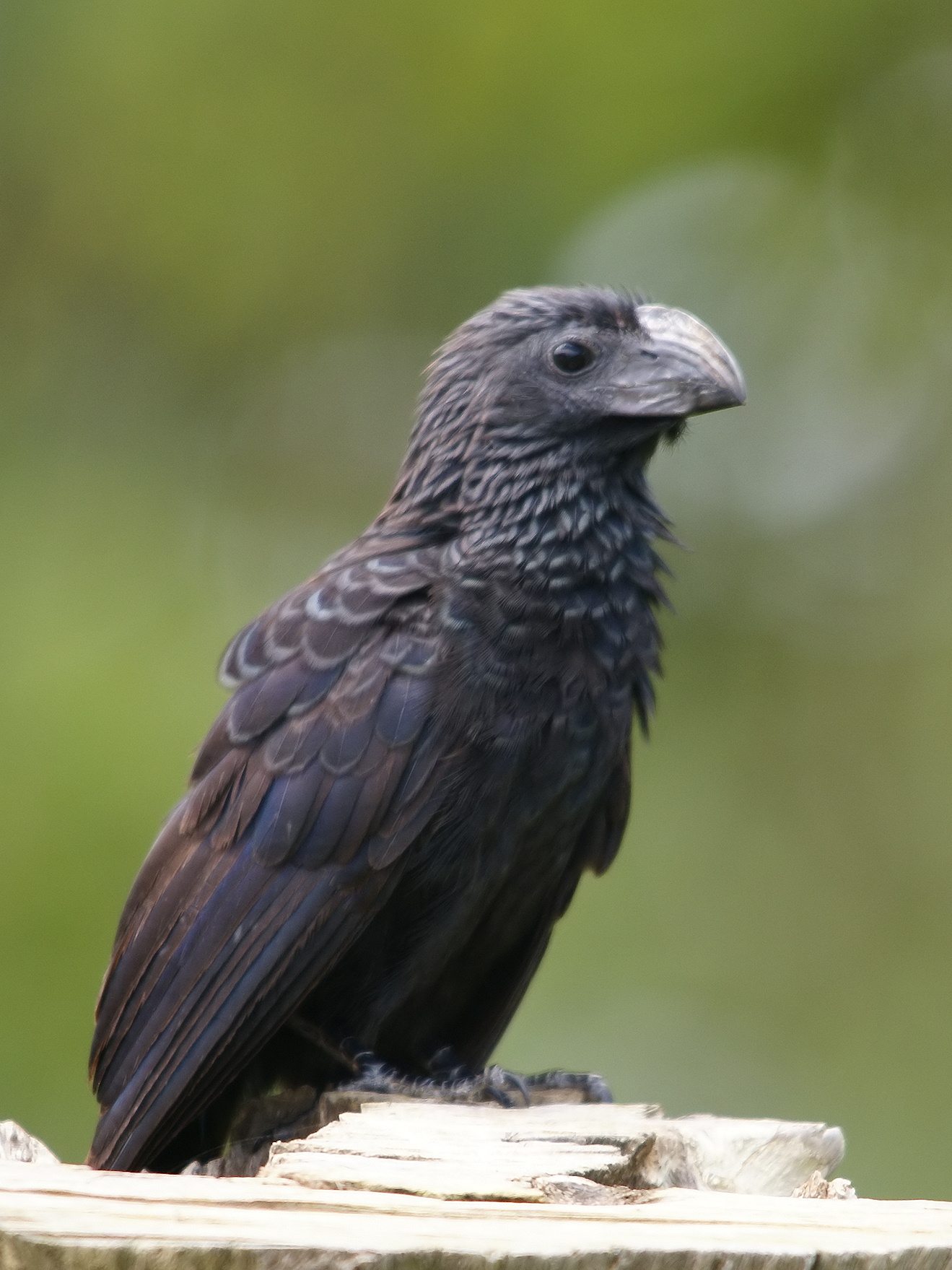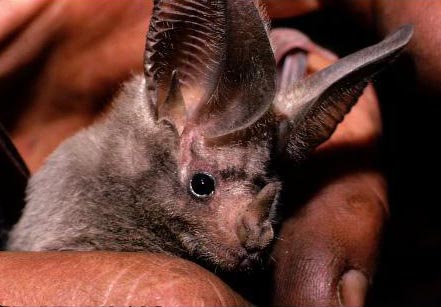|
Phyllostominae
Phyllostominae is a subfamily of bats that include big-eared, spear-nosed, sword-nosed bats and relatives. List of species *Subfamily: Phyllostominae ** Tribe Micronycterini ***Genus: ''Glyphonycteris'' ****Behn's bat, ''Glyphonycteris behnii'' ****Davies's big-eared bat, ''Glyphonycteris daviesi'' ****Tricolored big-eared bat, ''Glyphonycteris sylvestris'' ***Genus: ''Lampronycteris'' ****Yellow-throated big-eared bat, ''Lampronycteris brachyotis'' ***Genus: ''Macrotus'' - big-eared bats ****California leaf-nosed bat, ''Macrotus californicus'' ****Waterhouse's leaf-nosed bat, ''Macrotus waterhousii'' ***Genus: ''Micronycteris'' - little big-eared bats ****Brosset's big-eared bat, ''Micronycteris brosseti'' ****Giovanni's big-eared bat, ''Micronycteris giovanniae'' ****Hairy big-eared bat, ''Micronycteris hirsuta'' ****Pirlot's big-eared bat, ''Micronycteris homezi'' ****Matses' big-eared bat, ''Micronycteris matses'' ****little big-eared bat, ''Micronycteris megalotis'' ****Commo ... [...More Info...] [...Related Items...] OR: [Wikipedia] [Google] [Baidu] |
Vampyrum
The spectral bat (''Vampyrum spectrum''), also called the great false vampire bat or Linnaeus's false vampire bat, is a large, carnivorous leaf-nosed bat found in Mexico, Central America, and South America. It is the only member of the genus ''Vampyrum''; its closest living relative is the big-eared woolly bat. It is the largest bat species in the New World, as well as the largest carnivorous bat: its wingspan is . It has a robust skull and teeth, with which it delivers a powerful bite to kill its prey. Birds are frequent prey items, though it may also consume rodents, insects, and other bats. Unlike the majority of bat species, it is monogamous. Colonies consist of an adult male and female and their offspring. The adult male will bring food back to the roost to provision the adult female and their offspring. Colonies generally roost in tree hollows, though individuals may roost in caves. Due to habitat destruction and its low population density, it is listed as a near-threaten ... [...More Info...] [...Related Items...] OR: [Wikipedia] [Google] [Baidu] |
Tomes's Sword-nosed Bat
Tomes's sword-nosed bat (''Lonchorhina aurita''), also known as the common sword-nosed bat is a bat species from South and Central America. It is also found in the Bahamas, but is known from only one specimen collected on the island of New Providence. In 2006, the bat was rediscovered in the Santa Cruz Department of Bolivia by scientists Aideé Vargas and Kathrin Barboza Marquez. Prior to their find, it was believed that the bat had been extinct in Bolivia for 72 years. There has since been an Ecological Sanctuary established at the town of San Juan de Corralito located in the Ángel Sandoval Province to protect the species. Description Its ears are long with sharply-pointed tips. It has a large nose-leaf of up to . Its fur is dark brown or black in color, while the patagia are black. The forearm is . Individuals weigh . Its dental formula is for a total of 34 teeth. Biology and ecology It is insectivorous, though a record exists of one individual eating fruit. It is nocturna ... [...More Info...] [...Related Items...] OR: [Wikipedia] [Google] [Baidu] |
Pirlot's Big-eared Bat
The white-bellied big-eared bat (''Micronycteris minuta'') is a bat species from South and Central America, as well as Trinidad and Tobago Trinidad and Tobago (, ), officially the Republic of Trinidad and Tobago, is the southernmost island country in the Caribbean. Consisting of the main islands Trinidad and Tobago, and numerous much smaller islands, it is situated south of ... in the Caribbean. References Micronycteris Bats of Central America Bats of South America Bats of Brazil Bats of the Caribbean Mammals of Colombia Mammals described in 1856 Taxa named by Paul Gervais {{leafnosed-bat-stub ... [...More Info...] [...Related Items...] OR: [Wikipedia] [Google] [Baidu] |
Hairy Big-eared Bat
The hairy big-eared bat (''Micronycteris hirsuta'') is a bat species from South and Central America, as well as Trinidad and Tobago in the Caribbean The Caribbean (, ) ( es, El Caribe; french: la Caraïbe; ht, Karayib; nl, De Caraïben) is a region of the Americas that consists of the Caribbean Sea, its islands (some surrounded by the Caribbean Sea and some bordering both the Caribbean Se .... References Bats of Central America Bats of South America Bats of Brazil Bats of the Caribbean Mammals described in 1869 Taxa named by Wilhelm Peters Micronycteris {{leafnosed-bat-stub ... [...More Info...] [...Related Items...] OR: [Wikipedia] [Google] [Baidu] |
Giovanni's Big-eared Bat
''Micronycteris giovanniae'' is a species of leaf-nosed bat found in Ecuador. Taxonomy and etymology It was described as a new species in 2007. The holotype had been collected in 2001. This holotype represents the only individual documented of this species as of 2016. The eponym for the species name "''giovanniae''" is American poet Nikki Giovanni, "in recognition of her poetry and writings." Based on analysis of the cytochrome b gene, its closest relative is the Matses' big-eared bat, ''M. matses''. Description It is a medium-sized member of the genus ''Micronycteris''. Unlike some species of the genus, its belly fur is dark. The only known individual of this species had a forearm length of and weighed . It is a diploid organism with a karyotype of 2n = 40 and a fundamental number (FN) of 68. It has a dental formula of for a total of 34 teeth. Location and habitat The single individual known from this species was documented in Esmeraldas Province of Ecuador. It was found wi ... [...More Info...] [...Related Items...] OR: [Wikipedia] [Google] [Baidu] |
Brosset's Big-eared Bat
Brosset's big-eared bat (''Micronycteris brosseti'') is a bat species found in Brazil, French Guiana, Guyana and Peru. It feeds on insects and sometimes fruit and the exact population is unknown. The only listed threat is deforestation Deforestation or forest clearance is the removal of a forest or stand of trees from land that is then converted to non-forest use. Deforestation can involve conversion of forest land to farms, ranches, or urban use. The most concentrated d .... References Micronycteris Bats of South America Bats of Brazil Mammals described in 1998 {{leafnosed-bat-stub ... [...More Info...] [...Related Items...] OR: [Wikipedia] [Google] [Baidu] |
Waterhouse's Leaf-nosed Bat
Waterhouse's leaf-nosed bat (''Macrotus waterhousii'') is a species of big-eared bat in the family Phyllostomidae. It is found in the Cayman Islands, Cuba, the Dominican Republic, Guatemala, Haiti, Jamaica, and Mexico, with a range from Sonora to Hidalgo Mexico, south to Guatemala and the Greater Antilles (excluding Puerto Rico and the Bahamas). Behavior This species roosts primarily in caves, but also in mines and buildings. The species is insectivorous, primarily consuming insects of the order Lepidoptera and Orthoptera. ''M. waterhousii'' does not require complete darkness in its roosting place, and can often be found near the entrance of a cave (with in 10–30 meters), or even partially lit buildings. It is possible to find this species in groups, but not as common as other bats; they are almost never in direct contact with one another. They typically leave their roost about 30 minutes after sundown. Reproduction Sperm cycle Male ''M. waterhousii'' have an interesting c ... [...More Info...] [...Related Items...] OR: [Wikipedia] [Google] [Baidu] |
California Leaf-nosed Bat
The California leaf-nosed bat (''Macrotus californicus'') is a species of bat in the family Phyllostomidae. It is found in Mexico and the United States. Its natural habitat is hot deserts. Habitat California leaf-nosed bats can be found in Sonoran and Mojave Desert scrub habitats in the Colorado River valley in southern California, Nevada and Arizona, and throughout western Mexico. It is non-migratory and does not hibernate. Physical description The California leaf-nosed bat weighs between 12 and 20 grams, has a wingspan of over 30 centimeters and a body length of over 6 centimeters, and is brown in color. As its name implies, it has a triangular fleshy growth of skin, called a noseleaf, protruding above the nose. This bat is the only bat of the family Phyllostomidae in the United States to have large ears, usually over 2.5 centimeters. It is also one of the most maneuverable in flight. ''M. californicus'' seems to spread its uropatagium widely only when hovering or perfor ... [...More Info...] [...Related Items...] OR: [Wikipedia] [Google] [Baidu] |
Yellow-throated Big-eared Bat
The yellow-throated big-eared bat or orange-throated bat(''Lampronycteris brachyotis'') is a species of bat that ranges from southern Mexico to Brazil. It is the only species within the genus ''Lampronycteris''. A frugivore and insectivore, it is found in lowland forest up to an elevation of 700 m. Its activity is greatest in the first two hours after sunset, and peaks again after midnight. Description The yellow-throated big-eared bat is characterized as a "medium-sized" leaf-nosed bat. Its ears are short and pointed, and its nose-leaf is relatively small. Its dorsal fur is dark brown or orange brown, and the ventral fur is orange or reddish-yellow. Individual bats weigh and have forearm lengths of . The bat's dental formula is for a total of 34 teeth. Biology and ecology The yellow-throated big-eared bat is primarily an insectivore, but it will also consume fruit, nectar, and pollen. It is nocturnal, roosting in sheltered places during the day, such as caves, mines, hollow ... [...More Info...] [...Related Items...] OR: [Wikipedia] [Google] [Baidu] |
Tricolored Big-eared Bat
The tricolored big-eared bat (''Glyphonycteris sylvestris'') is a bat species from South America, South and Central America. Description Individuals weigh and have forearm lengths of . The fur on its back is long, woolly, and dark brown. Individual hairs are tricolored, with a dark basal band, lighter middle band, and dark distal band. Its dentition#Dental formula, dental formula is for a total of 34 teeth. Biology and ecology It is likely insectivore, insectivorous and frugivore, frugivorous. It is nocturnal, roosting in sheltered places during the day such as hollow trees and caves. These roosts consist of a Colony (biology), colonies of up to 75 individuals. Range and habitat It is found in Bolivia, Brazil, Colombia, Costa Rica, French Guiana, Guyana, Honduras, Mexico, Nicaragua, Panama, Peru, Suriname, Trinidad and Tobago, and Venezuela. It is generally found at elevations lower than above sea level, but has been documented up to . As of 2018, it is considered a least-c ... [...More Info...] [...Related Items...] OR: [Wikipedia] [Google] [Baidu] |
Davies's Big-eared Bat
Davies's big-eared bat or the graybeard bat (''Glyphonycteris daviesi'') is a species of bat in the family Phyllostomidae. It is named after James (Jim) Noel Davies (B. 1936) who discovered it whilst on an expedition in British Guiana, South America (Guyana since 1966) in 1963. This was the Cambridge University expedition to the rainforest reserve near Bartica in British Guiana. This species can weigh 30 grams and has a wingspan of up to 50cm. It is bigger than most micronycteris bats with a fierce disposition. A small frog was found in the stomach of a specimen, and the bat is strong-willed enough to chew its way out of a cloth bag. The species is found across the tropical regions of South America, including Brazil, Colombia, Costa Rica, Ecuador, French Guiana, Guyana, Honduras, Panama, Peru, Suriname, Trinidad and Tobago, and Venezuela. It is recorded (2021) in the ''Eponym Dictionary'', published by Johns Hopkins University Johns Hopkins University (Johns Hopkins, Hop ... [...More Info...] [...Related Items...] OR: [Wikipedia] [Google] [Baidu] |
Behn's Bat
Behn's bat, Behn's big-eared bat, or Behn's graybeard bat (''Glyphonycteris behnii'') is a species of bat in the family Phyllostomidae found in Brazil and Peru. It is known only from six specimens and is considered rare. It feeds on insects and small fruits. Taxonomy and etymology Behn's bat was described in 1865 by German naturalist Wilhelm Peters. Peters placed it in the now-defunct genus ''Schizostoma'' with a scientific name of ''Schizostoma behnii''. The holotype was collected in Cuiabá, Brazil. In 1898, Gerrit Smith Miller Jr. reclassified it, placing it in the genus ''Micronycteris''. In 1906, Knud Andersen placed it in ''Glyphonycteris'' but spelled the species name as ''behni''. The eponym for the species name "''behnii''" is German zoologist Wilhelm Friedrich Georg Behn. Description Its forearm length is . The lancet of its nose-leaf is about 1.5 times longer than it is wide. Biology and ecology Based on the diets of closely related species, Behn's bat is likely o ... [...More Info...] [...Related Items...] OR: [Wikipedia] [Google] [Baidu] |

